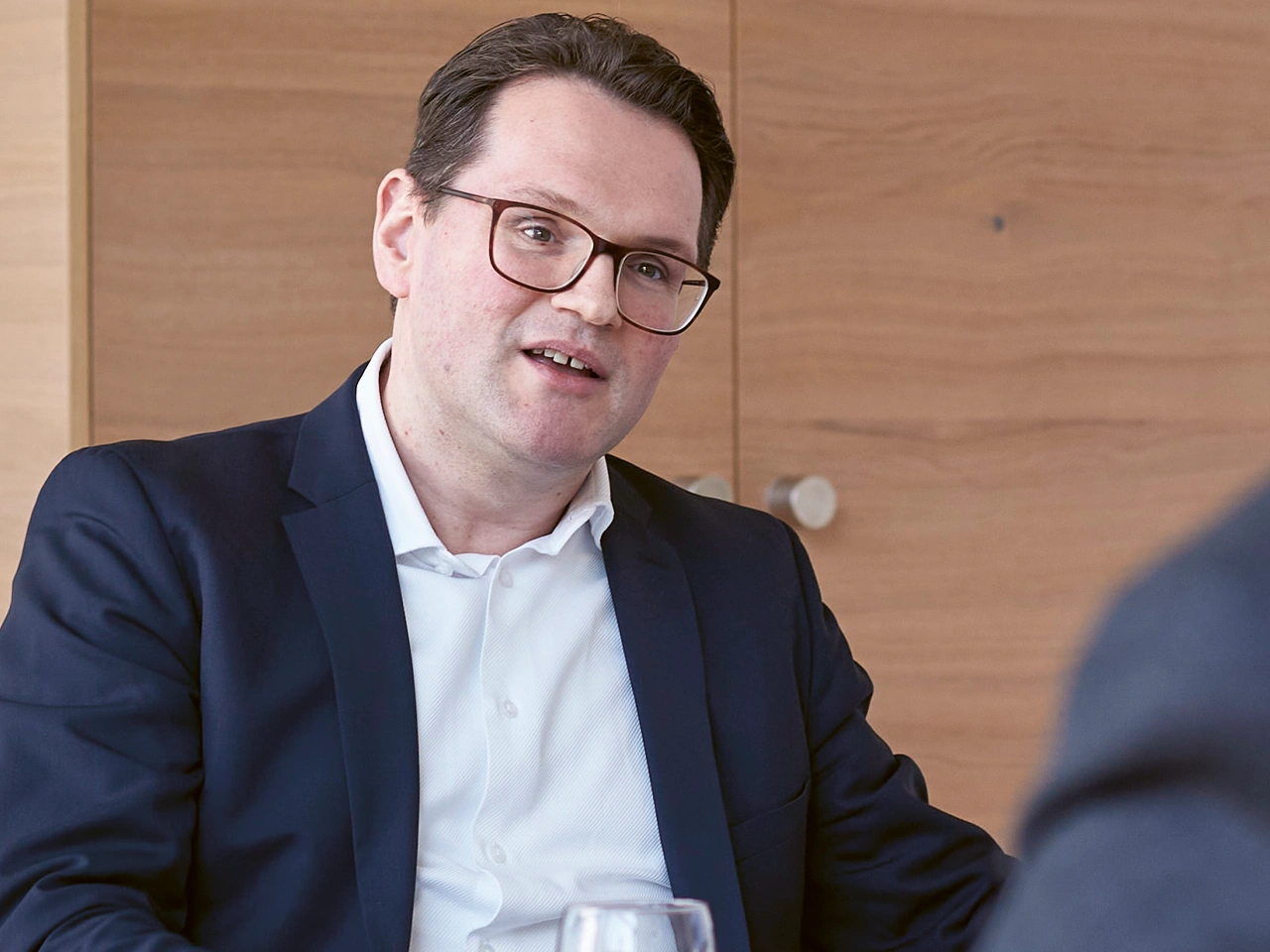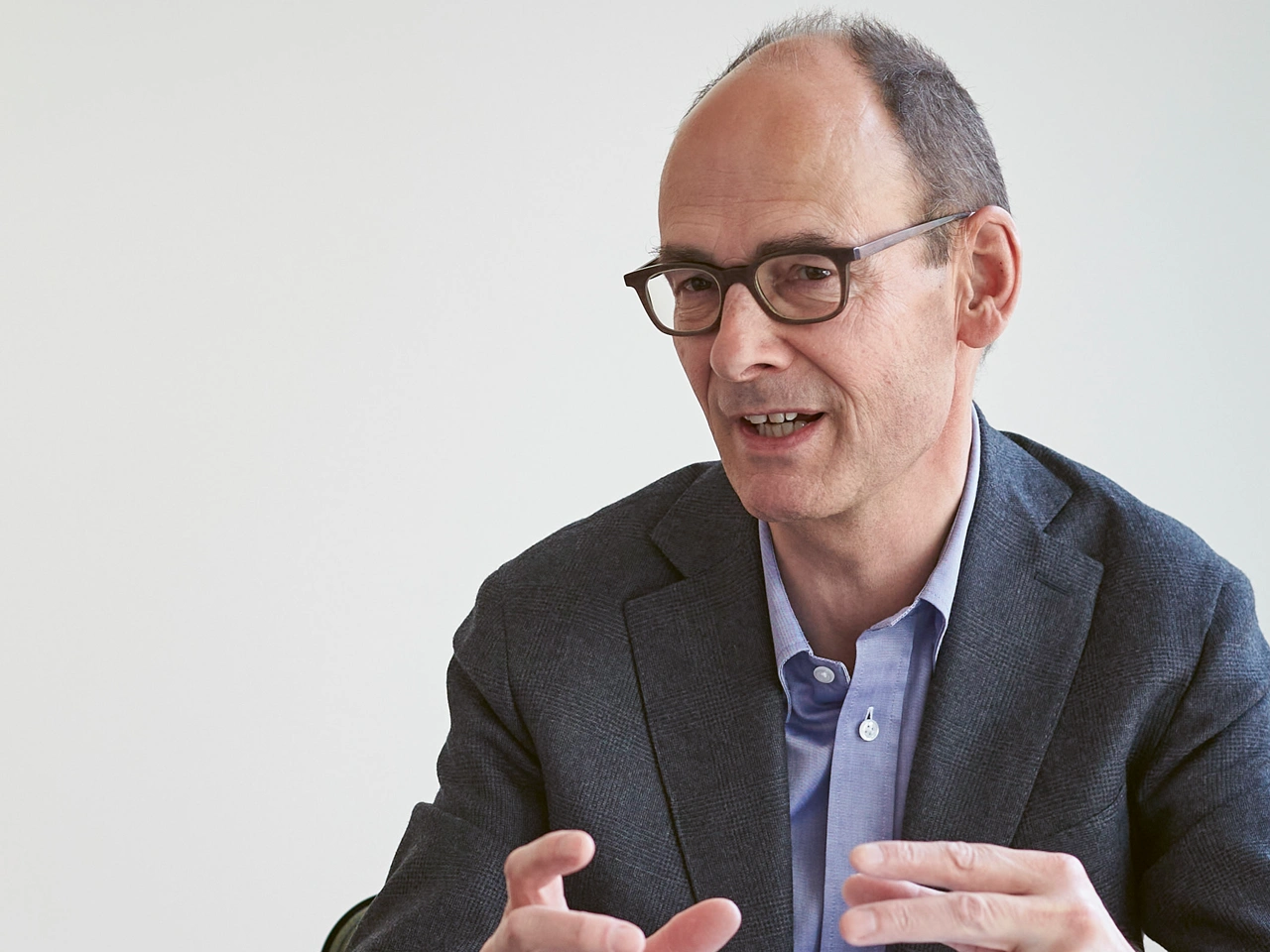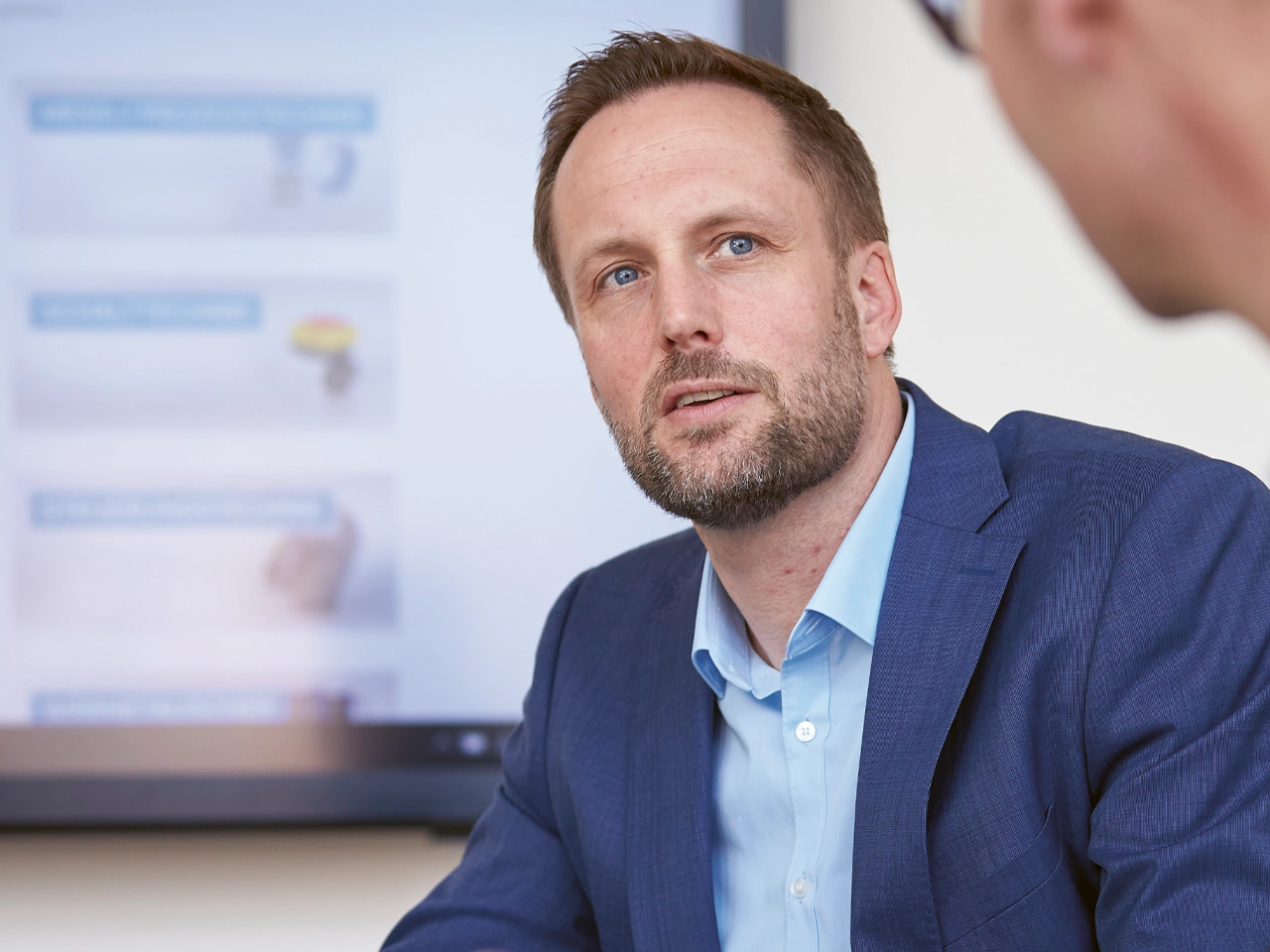Home > Company > Publications > Dr Stefan Leuthold
The ways of the customer listener
For Bachofen, corporate strategy development is a continual process. There is a constant focus on reviewing and refining market position in order to continually align the offer with an ever more rapidly changing market environment.
The value proposition for the customer segment of OEM/first-tier supplier – the main customer segment for Bachofen AG – was reviewed as part of strategic development in 2019. This was supported by Stimmt AG, which has been specializing in management consulting on the heme of customer focus for 22 years.
In the panel discussion, Dr. Stefan Leuthold, Stimmt AG, Daniel Bachofen, Managing Director of Bachofen AG and Andreas Bachmann, Sales Director and Member of the Executive Board of Bachofen AG reflect on the strategy project. The questions are asked by the editorial team of Bachofen’s Digest.
Editorial team: At Bachofen, we are in contact with our customers every day, from morning to evening. Why do we actually need advice on customer centricity?
Andreas Bachmann: That’s right, as a company specialising in sales, there really is no lack of customer contact here. Nevertheless, the process was still very important for us. This is because customer needs are usually assessed «inside-out», i.e. from the company’s point of view, instead of «outside-in». This means asking the customer what is really important to them and about where we can differentiate ourselves from our competitors in our work with the customer. With Stimmt, we have taken precisely this «outside-in» approach.
Daniel Bachofen: And we learned a methodology that promises to make us even more successful in the design-in process. This is by focusing for each specific contact partner on the overlap between relevance for customer, Bachofen’s credibility in the offer and differentiation from the competition.
Editorial team: How did Stimmt go about the project for Bachofen AG?
Dr. Stefan Leuthold: In an initial phase we created customer types. Which customers share the same needs and goals which Bachofen must meet in order to be a good business partner? In the second phase, we then broke down Bachofen’s existing offers into individual elements, added potential new features, and looked to see whether the customer types now differed accordingly.
In the process, we also found out which offer components were most beneficial for which customer types. Finally, we then tailored and tested the best possible offer for each type. If we show customers of a specific type all the offer variants, do they then really choose those we have tailored for them? We therefore spoke to different Bachofen customers three times and processed the findings from these discussions in order to arrive at a concrete result. This three-phase approach is typical for such
projects.
Editorial team: How was this methodology arrived at? Where did it come from?
Dr. Stefan Leuthold: Our team consists of psychologists, business administrators and engineers. So we take the available knowledge and experience from these fields and ask ourselves the following question. How do we need to understand customer behaviour and process this on behalf of companies in order that we can use it to provide support in the key challenges facing a company – acquiring customers, retaining customers and developing the company further for the future?
From psychology we know that customer behaviour can be explained on the basis of the customer’s goals, personality and situation. What does someone want to achieve, who are we dealing with and to which environment does the customer have to adapt their behaviour? Business administration tells us the greater the benefit we supply, the more we can earn – provided we keep our costs under control. So we arrive at benefit being the same as supporting consumer behaviour. The engineers then know exactly what needs to be implemented using which technologies and partners in order to really offer the benefit to target customers. The «User Centered Design» method propagated in the USA in the 1990s provides the frame of reference for this: Understand customers, design and test solutions – and iterate until everything falls into place.
Editorial team: How does a company get honest feedback from its customers?
Dr. Stefan Leuthold: The most honest thing is genuine behaviour. Does the customer do something or not? We can certainly ask questions and then use clever methods to try and derive effects from the responses such as social desirability. Or we can ask a question three times in different places in the interview and then see whether the answers are consistent.
However, tasks are better. Based on these we can observe what a participant actually does, and not rely on what they say. For example, in the third phase mentioned above, we showed all of the interview participants the same advertising texts. The persons involved then had to think about their business goals and challenges (which they had already explicitly told us about beforehand in another innocuous context) and choose the text in which Bachofen represented the most benefit to them. So the customers simply responded to this, and we checked to see if the response matched what we had inferred. You therefore get honest answers from observing instead of asking.
Editorial team: Bachofen conducted 46 interviews with selected customers. How was that received by the customers?
Daniel Bachofen: Surprisingly well. However, the contact persons were also carefully selected. They quickly realised that this was not just another superficial pro forma survey. They were often interested in the methodology themselves, probably not least due to the fact that this topic affects every company. Who wouldn’t want to increase their own hit rate? The fact that the interviews were also always attended by a member of the Executive Board certainly also underlined how seriously we were taking this.
Andreas Bachmann: Yes, and I think many of the customers also really appreciated the fact that we were interested in their needs.
Editorial team: How do you measure the success of a strategy project like this?
Andreas Bachmann: This project was about us managing to «design in» our products more successfully on the machines, systems, equipment and vehicles of our OEM customers. The best way to measure the success of this project is therefore to measure the trend in our design-in successes.
Daniel Bachofen: In purely mathematical terms: profit from the additional business gained relative to the investment involved in the project. More difficult to measure is the accompanying cultural change, but this seems to me to be at least as important. This refers to our increasing focus on the genuine, relevant customer need combined with limiting ourselves to making an offer which is credible and also differentiated. If we embrace this, we will achieve even greater impact on target customers!
Editorial team: Mr. Leuthold, you will certainly have had an impression of Bachofen before you started the project. What was it? Did this change over the course of the project?
Dr. Stefan Leuthold: In many companies, we start by talking to the management about what we do. After that, the project team gets going – and then every month you have to justify what you’ve done to the management. That is part of our business and we accept this.
At Bachofen things were different right from the start. After the first meeting when we asked if we could get to know the company in more detail. Andreas Bachmann himself came forward and spent an entire afternoon patiently answering all our questions. We tell all clients they should attend interviews in order to get an idea of what their customers are saying. Normally it’s the junior staff who come along, however at Bachofen somebody from the Executive Board was present. I was very impressed by that.
Editorial team: Everyone is a customer themselves at some point. Can you say what type of customer you are?
Daniel Bachofen: Depends on the situation. On the one hand, I like to make my purchasing decisions on my own, and in those areas where I consider myself to be competent. On the other hand, I like to be advised in those instances where I need and seek support. However, I quickly lose patience if I get the impression I’m not being understood or if I feel I’m not able to learn anything new.
Andreas Bachmann: I think my customer type is the technically savvy decision-maker who likes to compare and try things out without being too heavily
influenced by a salesperson. I like to initially gather my information anonymously on the internet and then contact the potential suppliers with very specific questions. It is important for me that these questions are answered quickly, straightforwardly, and competently.
The perfect situation for me is when a supplier brings a couple of issues to my attention which weren’t even on my radar.
Editorial team: What was the key insight taken from the project for Bachofen?
Daniel Bachofen: I am deeply impressed by the fact that we have opened up another field which will further our own development in a way which is beneficial to our customers and to ourselves. For meeting needs in a precise manner and not using a scatter gun approach.
Andreas Bachmann: For me personally it was very important to recognise that there are different customer types with different requirements. We tend to believe that customer needs can be inferred from your own needs as a customer. However, this only holds true if the customer in front of you is of the same type. We now want to succeed in engaging and serving these different customer types on an individual basis so they are able to generate maximum benefit from their cooperation with Bachofen.
The recipe for success of the Zurich-based management consultancy founded in 1998 sounds as simple as it is obvious: happy customers lead to successful companies – differentiation by means of positive customer experiences. Over 125 companies from a range of sectors in German-speaking countries have already sought Stimmt's advice. Stimmt AG works using methods of customer-centric strategy development, customer experience management, design thinking and human centered design. The customers of Stimmt’s clients are involved in this as much as possible. The interdisciplinary team consists of psychologists, business administrators and engineers, each with multiple years of experience in customer acquisition, customer care and business development.


